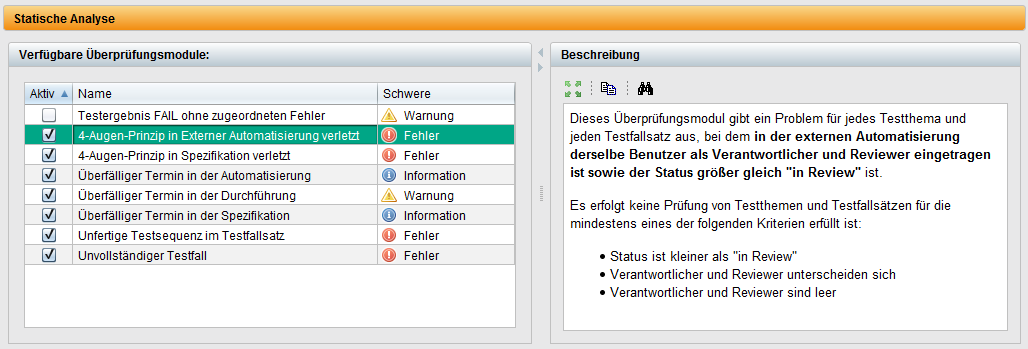What is Static Analysis of tests?
More and more test projects require regular proof of test content and test results. A recurring challenge here is to ensure formal correctness and conformity with the process definition of the database used so that the evidence can be generated with consistent content.
Anyone who has ever checked all of their tests to see whether, for example, all of the tests carried out with incorrect results also reference an error or whether the reviewer of a test was not also the creator will be familiar with this problem.
Static code analysis has been used in programming for a very long time to detect errors in the source code at an early stage with the help of formal checks.
Static analysis of tests is based on this test procedure and carries out a series of checks based on test specifications and test results. These checks can include all elements of a test, i.e. not only its test specification but also its test results, for example.
The benefits
Compliance check
Process requirements for testing and compliance with organisational regulations can be automatically checked and easily ensured.

Avoiding mistakes
Formal mistakes in the tests can be avoided from the outset, which reduces the need for rework and increases the reliability of the releases.

Efficient reporting
Once generated, reports do not have to be checked manually for formal correctness.
Using static analysis in test design
Static analysis of tests is a powerful tool in the field of test design and helps to fulfil verification obligations. It makes it possible to automatically check test specifications and test results for formal correctness and conformity with the process specifications. This technology supports test designers in systematically ensuring that all test cases are correctly referenced and that there are no role conflicts, for example between test creators and reviewers. By identifying formal errors and inconsistencies at an early stage, the quality of the tests can be significantly improved before they enter the execution phase.



